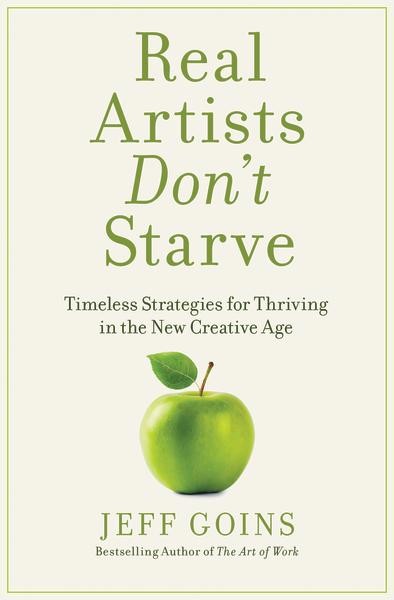If you want to be a writer, a musician, or an artist of any kind, you don’t have to assume that you are going to be poor and starving for the sake of your art. Real artists can and do thrive and they always have. It is time to retire the “starving artist” myth.
That’s the basic theme of Jeff Goins‘s book, Real Artists Don’t Starve.
Goins cataloged many, many stories of artists throughout history showing how they thrived by creating art, connecting with others, and made money doing it. The amount of research in this book is impressive and the skill with which the stories are told kept me reading straight through to the end.
Here are three lessons I learned while reading the book:
1. How to Use Stories in Non-fiction Books
As I read the book, I immediately wanted to dissect the structure he was using. I was very impressed.
Michelangelo’s story as a Thriving Artist was the backbone of the entire book. He is introduced at the beginning, dispelling the myth that Michelangelo was a Bohemian artist living in poverty, and returns again and again in each chapter. We read more about his life with each new chapter. I found this approach to be a very compelling way to make an argument using story. Some authors do this with their own personal story (I have) but I really like this approach.
The same technique was used in each individual chapter as well. The opening chapter stories acted as the backbone for each chapter. The story was introduced with an open loop that got tied in at the end. Each chapter had a dozen stories or so, but the one story in each chapter offered a nice through line.
I noticed this same approach listening to the episodes of the first season of the Masters of Scale podcast. Although one interview is the focus of each episode, a handful of other entrepreneurs and their stories are interwoven throughout the episode as well. It is very compelling.
2. Great Artists Were Always Also Entrepreneurs
I believe being an entrepreneur makes me a better artist. I also know that the days before I thought like an entrepreneur–with the good business and marketing sense that comes with that way of thinking– I was an unknown writer. I could have gone on writing and creating without anyone ever noticing unless I started thinking like a businessperson (which I used to loathe by the way).
I found the examples of artists thinking like entrepreurs to be very reassuring. Michelangelo was basically a CEO for many of his projects later in life. Jim Henson masterfully managed the licensing of his muppets. Even Shakespeare was able to find success as an artist only because he owned the company that would perform his plays.
I used to think the entreartists / entreauthor phenomenon was something of recent history made possible by new forms of media. Clearly, this is a universal principle throughout history.
3. Bibliographies Can Be Fun
I’m sad to admit it, but following up on my research for the bibliographies and citations for my last two books was excruciatingly painful. I wanted to be done with the books and the details of the sources I used and making sure they were all cited correctly just made me want to cringe.
I actually enjoyed reading Goins’s bibliography because it was written more as a recounting of the journey he went on to discover the ideas and stories he included in the book. You can tell that he enjoyed the journey.
I love this format for a bibliography and I’ve never noticed anything like it in other books. This is something I would really enjoy doing instead of cramming it all in at the end worrying about where the period goes in the bibliograhy or footnotes according to Chicago Manual of Style. It must have been fun to write about the sources in his way and to recall the journey he went on to complete the book.
Writing a book is a journey with many steps and guides a long the way. That is what bibliographies should show us in the back of a book.
Get the Book
If you are interested in learning from the many stories of thriving artists throughout history, get a copy of Real Artists Don’t Starve:



